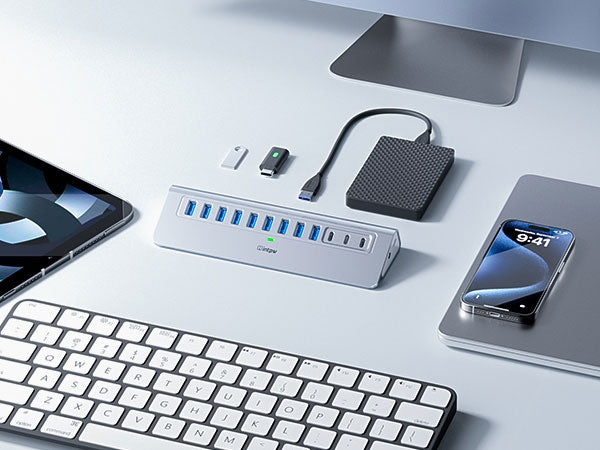
Why Your Conference Room Deserves a USB Hub (Hint: It’s Not Just About Ports)
, by USintpw, 2 min reading time

, by USintpw, 2 min reading time
Let’s face it: modern meetings are messy. Between laptops fighting for HDMI slots, presenters fumbling with dongles, and MacBook users cursing VGA adapters, a reliable USB hub isn’t a luxury—it’s survival gear. But how do you pick one that balances cost and performance? Buckle up; we’re diving into the USB hub jungle.
Before you click “buy,” ask: Does your team juggle Thunderbolt 5 devices or legacy VGA projectors? Do you need 10 ports or just 4? A powered USB hub with HDMI might save the day if your room runs 4K cameras and wireless mics. For quick file swaps, a basic USB 3.0 hub works—but don’t skimp if stability matters.
USB 3.2 or Bust: Speed matters. USB 3.2 hubs (10 Gbps) handle 4K video and bulk data transfers without choking. Bonus: Look for DisplayPort Alt Mode support to future-proof your setup.
Power Source Wars: Powered vs. unpowered USB hubs? If you’re connecting external drives or docking stations, choose one with external power supply. Unpowered hubs risk disconnecting mid-presentation—nobody wants that awkward silence.
Port Diversity: A USB-C to HDMI and VGA hub bridges old and new tech. Need to hook a MacBook Pro to a 2005 projector? A 2-in-1 USB adapter with VGA is your lifeline.
Pro Tip: Avoid hubs that force you to choose between charging and data. Opt for USB-C hubs with power delivery to juice up devices while transferring files.
Overheating: Cheap hubs melt under pressure. Read reviews mentioning “stays cool during 8-hour meetings.”
Missing Safety Certs: UL/CE certifications aren’t glamorous, but they prevent fried devices.
Final Words: Don’t Settle for “Meh”
A great USB hub is like a backstage crew—it works silently but makes the show flawless. Prioritize USB 3.2 speeds, HDMI/VGA compatibility, and robust power delivery. Your next meeting deserves more than a janky dongle.
Q: Do "fast" USB hubs live up to their claims, or are they just marketing jargon for bulk buyers?
A: Speed claims can be legitimate but require verification:
- Check certifications: USB-IF certification ensures compliance with USB 3.2 Gen 2 (10 Gbps) or Thunderbolt 4 (40 Gbps) standards.
- Enterprise picks: Opt for Anker PowerExpand 12-in-1 or CalDigit TS4 Dock. Avoid no-name brands—IT teams report 30% failure rates in speed-critical tasks like 4K video conferencing.
Q: Are Cheap USB Hubs Viable for Office Use?
A: Cheap hubs risk productivity and security:
- Hidden costs: 65% of IT tickets for disconnections/overheating trace back to uncertified hubs.
- Corporate-grade alternatives: Brands like INTPW offer UL/CE-certified hubs with 5-year warranties.
Q: Why invest in hubs with external power supplies when unpowered ones are cheaper?
A: Powered hubs are non-negotiable for business continuity:
- Mission-critical use: Simultaneously running 4K cameras, external SSDs, and biometric scanners requires stable power.
- Safety: Overloaded unpowered hubs can damage devices—like frying $2,500 encryption dongles.
Q: Our team uses MacBook Pros. Do USB-C hubs vary in macOS compatibility?
A: MacBooks demand precision:
- Avoid: Generic hubs lacking macOS driver support (e.g., DisplayPort Alt Mode failures).
- IT-approved: INTPW Thunderbolt 3 Dock is a good choice, for it supports enterprise MDM solutions like Jamf.

Subscribe to our emails